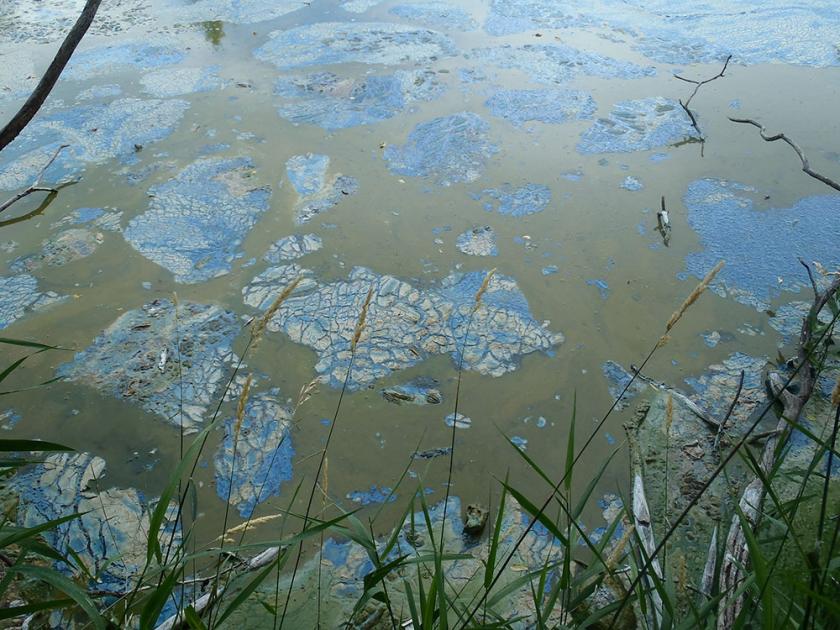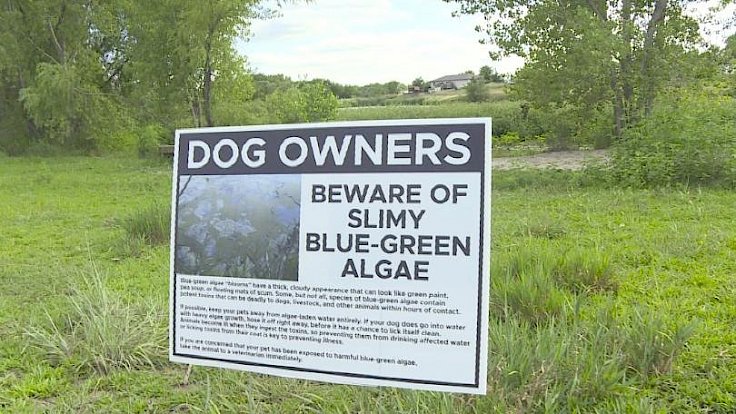Algae Toxicity

What: Toxic Algae is "blue-green algae" that is actually a type of cyanobacteria (a prokaryote)
2 toxins associate with Cyanobacterium: Microcystins and Anatoxins:
- Microcystins =Liver Toxin
- Anatoxins =Neurotoxins
Large Blooms aka "Algae Blooms" are harmful. These algae blooms occur between late summer and early fall in temperate climates. If the environmental conditions are right, the algae can be around long-term. Blue-Green Algae blooms best in fresh or brackish water, warm temperatures, and high humidity. These conditions make south Louisiana the perfect niche for the algae to bloom. Another factor that affects algal growth is the opening of the spillway. The opening of the spillway mixes the freshwater from the Mississippi River with the saltwater from Lake Ponchartrain, allowing the algae to flourish due to these conditions. Heavy rains and runoff also contribute to large algal blooms.
What Does Blue Green Algae Look Like?
This type of algae is usually found in stagnant water and is bluish-green in color. On the water's surface, the algae look like green sand or scum. The algae are usually "washed up" onshore, floating in large clumps on top of standing water, attached to underwater plants, or even dried up on shore. The harmful BG algae can be found in ponds, birdbaths, trophs, or any large bodies of water.
How Is This BG Algae Toxic?
Exposure is from contact (on the skin/fur) or ingested. Symptoms of algae toxicity include rashes and skin irritation on humans and dogs that swim in these contaminated waters. The problem with our four-legged (or tripods) friends is that the toxic BG algae stick to their fur, and they will lick themselves to clean off the algae while also ingesting the harmful cyanobacteria (BG algae). Any mammal is potentially at risk due to this deadly cyanobacteria. Dogs and other small mammals are more susceptible because of their size and the ability to venture into contaminated water (i.e swimming). Cats, however, are less susceptible to this toxic cyanobacteria because they are very picky about their water source and tend to not go swimming.
Signs of Toxicity
- Contact: Skin rashes (since dogs have fur, less likely to notice, more common in humans)
- Microcystin/Liver Toxin portion: Weakness, lethargy, vomiting, dark/tarry diarrhea, pale or yellow (jaundice) mucous membranes, muscle tremors, seizures, coma, death. These symptoms are from acute liver failure and the toxins that build up quickly because the liver can no longer flush them out.
- Neurotoxin/Anatoxin: Weakness, lethargy, ataxia, excessive salivation and tearing, difficulty breathing (diaphragm becomes paralyzed), blue mucous membranes (cyanotic), muscle tightness/stiffness, seizures, death
What To Do If You Think Your Pet Is Exposed?
What is the treatment? Unfortunately, the toxins from cyanobacteria can act rapidly on the body. Micro toxins from the algae can take hours or days for symptoms to appear and may even cause death. Anatoxins, however, can take 30 - 60 minutes for symptoms to appear. This means that going to the vet ASAP is imperative.
Treatment consists of emptying the stomach by inducing vomiting if they are not in a coma state or gastric lavage if they are. The veterinarian will also give a binding agent called activated charcoal to stop the absorption in the gut of the toxic bacteria. Also, blood tests will be performed to look at liver values, glucose levels, electrolytes, and other parameters to treat these deficiencies swiftly. If the patient is seizing or has muscle tremors, then a muscle relaxer or anti-seizure medication will be given.
There is no antidote. The best thing is to prevent this by not letting your pet near water that has a film or foul odor. If you think your pet may have been exposed, do NOT wait for symptoms to appear.
What Can I Do?
- Remove any standing water from plant or bird containers.
- Check Advisories: SaveOurLake.org is one for Louisiana
- Mobile App: BloomWatch is an interactive device where the public can take pictures of suspected algae blooms and report it.
Reference: LiveScience






